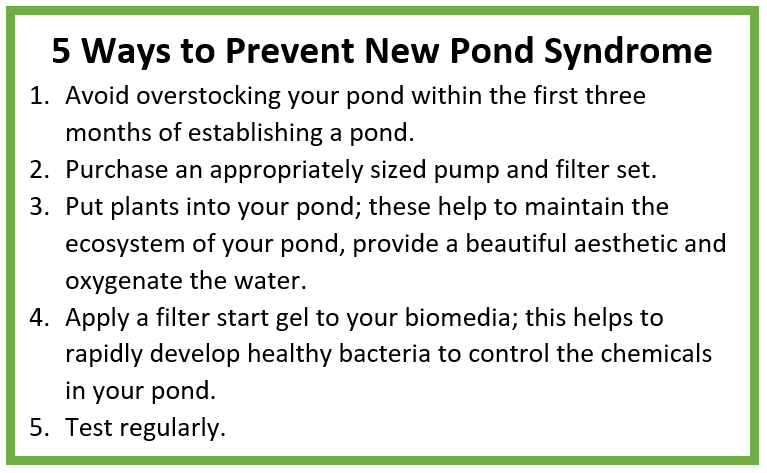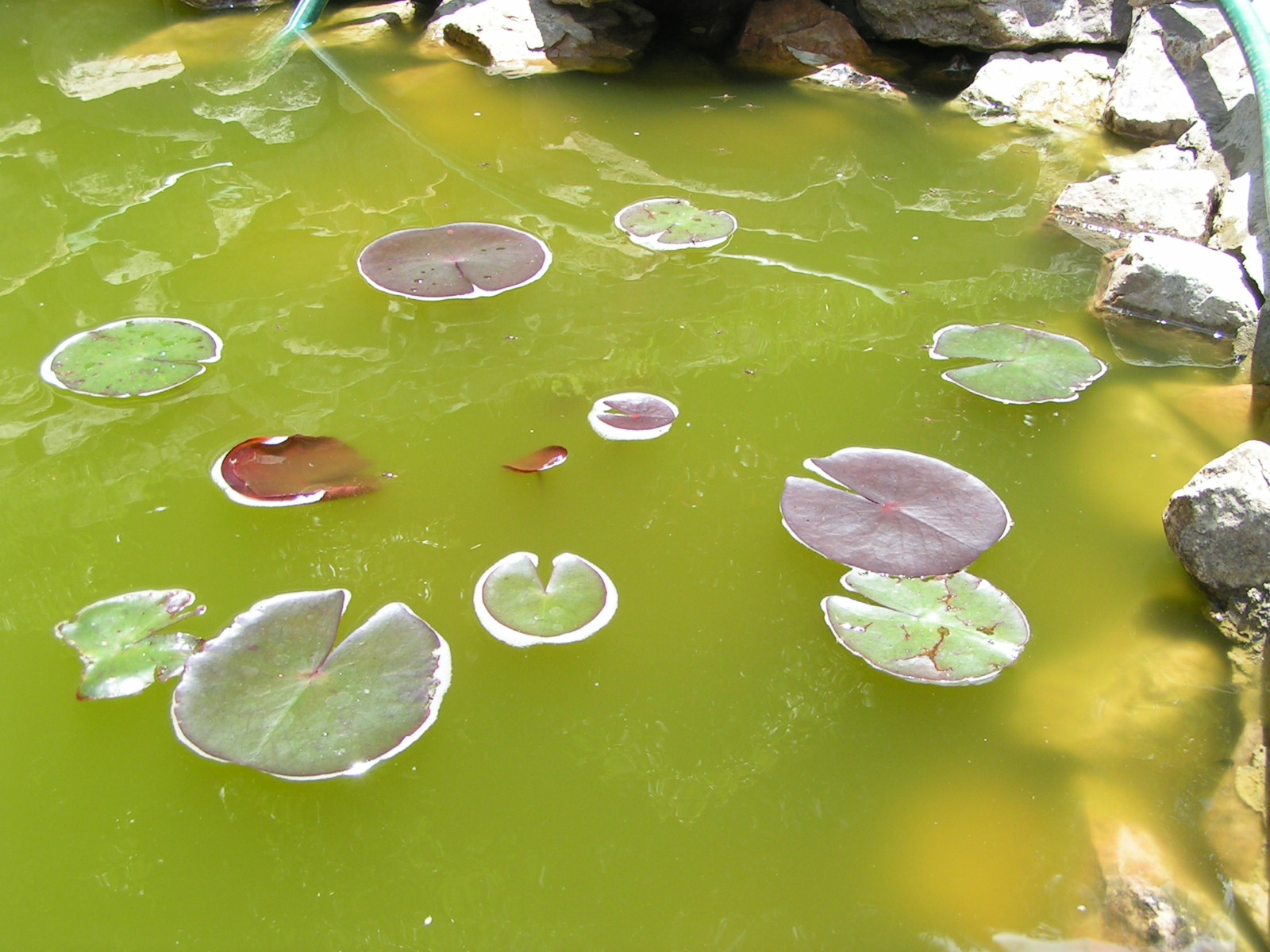New Pond Syndrome
Getting the chemicals in your water balanced can be an arduous task; particularly at the start of your pond’s existence or after a water change. You may experience some problems with your Ammonia, Nitrites and Nitrates. But this is perfectly natural and does not normally need any treatments to resolve.

What is New Pond Syndrome?
New Pond Syndrome is, in short, the chemical imbalances that your pond will experience after being established or after a water change. The symptoms are often green water reminiscent of an algae bloom, stressed fish that may experience diseases and chemical spikes of Ammonia, Nitrites and Nitrates.
Once you have filled your pond up, your pond will begin to develop its own ecosystem and the Nitrogen Cycle will begin. The Nitrogen Cycle is a natural process where organic matter decomposes and the resulting Ammonia is turned into Nitrites and then Nitrates.
At the beginning of the Nitrogen Cycle, you will see a spike of Ammonia, followed by a spike of Nitrites and then Nitrates. This can result in green water, a foul odour or stressed fish. Because of the beginning of this cycle, it is important to avoid putting fish into a new pond straight away.
This is because your filter doesn’t start with any healthy bacteria in it; it takes time for the bacteria to develop and resolve the chemical imbalances in the pond. While it often takes up to six weeks for healthy bacteria to develop in your filter, it may take up to 3 months for the pond to mature.
Due to the Ammonia spikes, you may also start to see your pond going green. While this may be attributed to algae (see our Green Water blog), it is important that you test your water first, with either a Tetra 6-in-1 Test Kit or a Blagdon Pond Health Test Kit. This will help to identify if the discolouration is caused by an Ammonia spike or if it is algae.
Fish Symptoms of New Pond Syndrome
If your pond is under 3 months old and you see any of the following symptoms in your fish, they are likely to be symptoms of New Pond Syndrome.
- Fish aren’t eating and they are sulking on their own
- They are scratching up against objects in the pond
- They are gasping at the surface of the pond
 Causes of New Pond Syndrome – Nitrogen Cycle
Causes of New Pond Syndrome – Nitrogen Cycle
A new pond will take up to 80 days to cycle through the Nitrogen Cycle. You may see your pH level approaching 9, when it should be balanced as close to 7 as possible. But do not worry about Ammonia at this point. Once this pH decreases to approximately 8-8.4, you can start to add fish to your pond. You can always use the Tetra Pond Test 6-in-1 or the Blagdon Pond Health Test Kit to test your pH, or you may find it easier to use the Digital pH Tester.
After 70-90 days, the pH will continue to reduce and you may start to see the development of algae, or green water. The algae develop due the increase in Ammonia and decaying organic matter (decaying plants, fish waste, leftover food). At this point, you should test your water and measure the levels of Nitrates, Nitrites and Phosphates. Most test kits will include an easy-to-read diagram, but our Water Quality guide includes the ideal ranges for the chemicals in your pond. You can test your water with either the Tetra Pond Test 6-in-1 or the Blagdon Pond Health Test Kit.
Healthy bacteria in your pond help to break the Ammonia into Nitrites; this chemical is readily consumed by your plants. But your plants cannot consume enough Nitrite to detoxify your water; other types of healthy bacteria can metabolise the Nitrite into Nitrates. Nitrates are only toxic to your pond when there are high levels of it and it must be removed through plants, algae, water changes or bacteria. Normally, ponds will have enough healthy bacteria and plants to manage the levels of these chemicals.
It is really important that your pond has a sufficient amount of aeration in your pond in order to help healthy bacteria to develop; please see our blog posts on aeration for more information.
What can impact the Nitrogen Cycle?
While a wildlife pond’s Nitrogen Cycle will rotate through the cycle of having a higher pH, Ammonia, Nitrite, Nitrate and Phosphate; the addition of fish may impact this cycle. Fish produce waste, which decomposes and releases Ammonia; further contributing to the chemical changes in your pond.
In addition to this, overfeeding your fish can have a significant impact. Any leftover food will decompose in your pond into Ammonia; causing the Nitrogen Cycle to become imbalanced.
While this new cycle should be resolved through the use of an appropriate and effective filtration system, you can also use products like our PondXpert Gel Balls which can treat chemicals in your pond. Or you can use a Filter Start Gel to develop the healthy bacteria in your filter.
If you have any queries, please contact us.